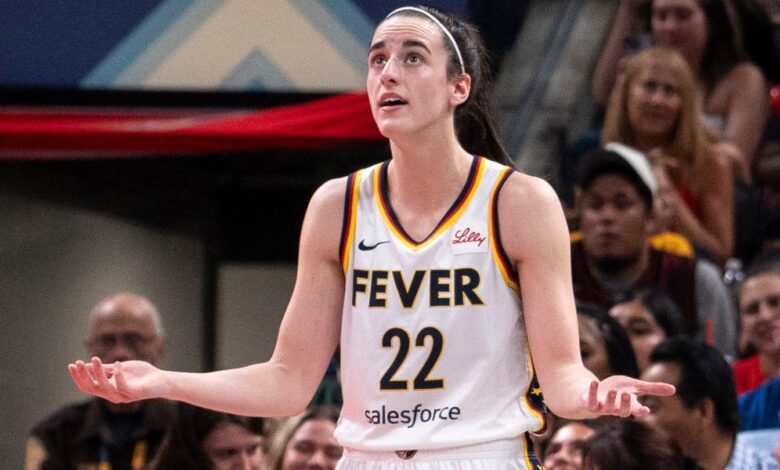WNBA Fans Ripped Refs After Missing Easy Call for Caitlin Clark


Caitlin Clark and the Indiana Fever won their third straight game on Wednesday, beating the Washington Mystics, 88-81. Clark had a big night, finishing with 18 points, 12 rebounds, six assists, and four steals.
While Clark dazzled fans most of the game, there was one moment that had everyone crushing the refs over a missed call that should have landed the No. 1 pick in last April’s draft on the free throw line.
Clark took the ball to the hoop and was going to attempt a layup when Washington’s Stefanie
Dolson took a swipe at her and knocked the ball away on what looked like a clear foul.
Check this out:
How is this not a foul for Caitlin Clark???#WNBA #FeverRising pic.twitter.com/gaLzw5OzMv
— Ashwin (@Sudharsan_ak) June 20, 2024
Fans blasted the officials:
Look at this #wnba your officiating is a joke #feverrising https://t.co/YHIYSv803Z
— james (@jamesbc81) June 20, 2024
— Patrick (@patrickberzai3) June 20, 2024
Badly missed call by @wnba officials; this happens too often, to many players. https://t.co/Vp4bKJ91oo
— MKW (@rugcernie) June 20, 2024
Officiating in @WNBA is terrible, actually it sucks. https://t.co/Y2wwMjNF4f
— Andy (@IowaHawkeye68) June 20, 2024
Because the refs suck https://t.co/SdCaMLvvJT
— RC 🇺🇸 (@MNHawkguy) June 20, 2024
WNBA refs are just horrible. https://t.co/11gFIKN24O
— Ted Frye (@DawgsBU) June 20, 2024
Published

ANDY NESBITT
Andy Nesbitt is the Assistant Managing Editor of Audience Engagement at Sports Illustrated. He works closely with the Breaking & Trending News Team to shape SI’s daily coverage across all sports. He has been working in sports media for over 20 years, appearing on Fox Sports, For the Win, The Boston Globe, and NBC Sports. He’s a golf fanatic who desperately wants to see the Super Bowl played on a Saturday night.


